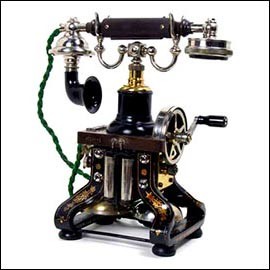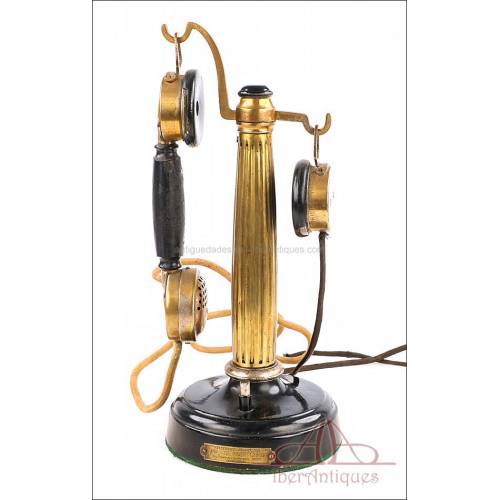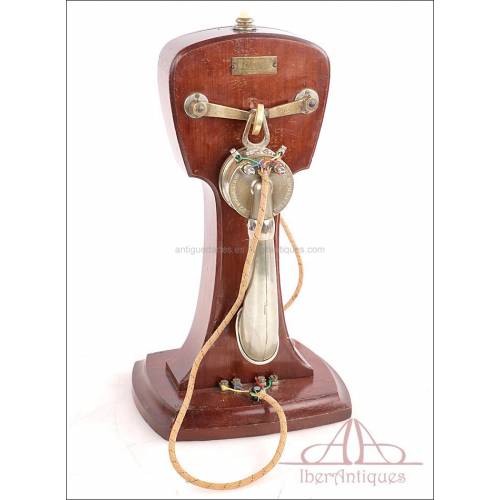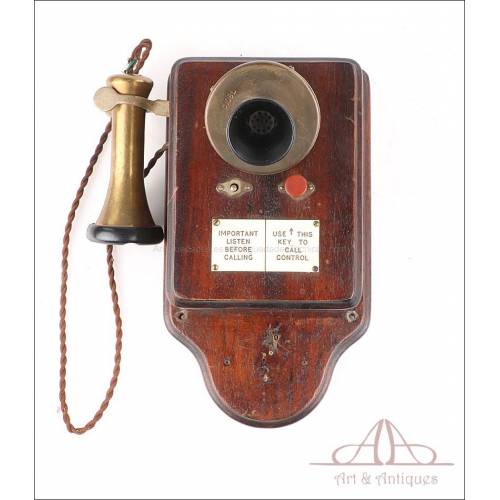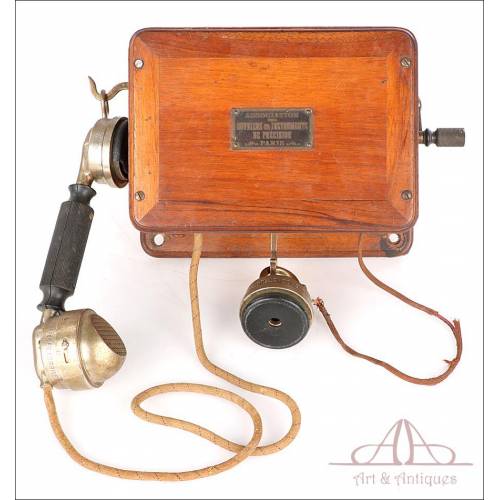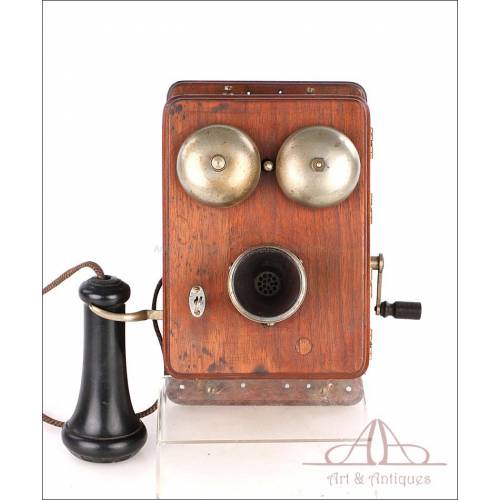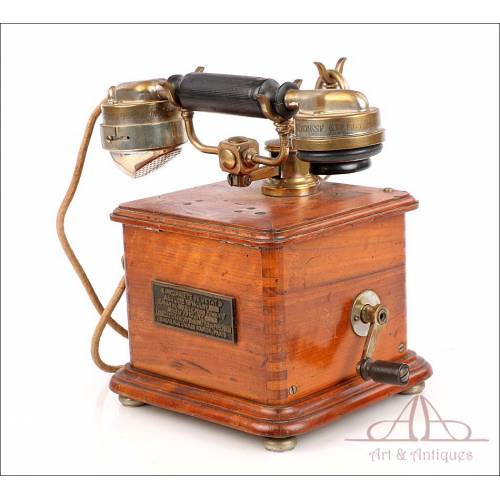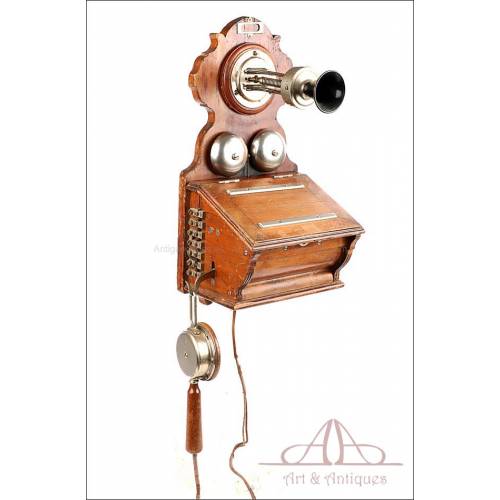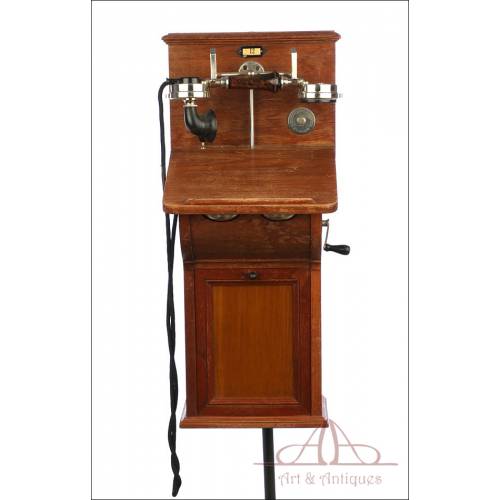Antique Telephones
Antique telephones are pieces of high aesthetic and historical value for collectors of antiques related to communications technology. Since the invention of the telephone in the late 19th century revolutionized communication between people, models have evolved at the speed of light. From the first designs, bulky and complicated to handle, to the...
Antique telephones are pieces of high aesthetic and historical value for collectors of antiques related to communications technology. Since the invention of the telephone in the late 19th century revolutionized communication between people, models have evolved at the speed of light. From the first designs, bulky and complicated to handle, to the current cell phones, the evolution of this invention has been truly spectacular.
Early telephones: the first models
The first known telephone is due to the ingenuity of an Italian inventor, Antonio Meucci. Although for decades the invention of the telephone was attributed to the American Alexander Graham Bell, it was eventually shown that Bell actually patented the invention before Meucci. To solve this mistake, in 2002 the US Congress passed Resolution 269, which returned the paternity of the device to Meucci (who gave it the curious name of telephone).
It was in 1854 when Antonio Meucci built the first known telephone with the intention of communicating the upper floor of his home, where his office was located, with the lower floor, where his wife used to be. Lacking sufficient financial resources, Meucci was unable to register the patent and it ended up being acquired by Alexander Graham Bell. Unfortunately, the Italian inventor passed away without being recognized as the real "father" of this device: an invention that revolutionized the way people communicate with each other, without which we could not understand the evolution of our society.
Types of old telephones
Old telephones can be classified into different types, depending mainly on their design. In reality, the technology that makes them work is basically the same; for this reason, when establishing a typology it is necessary to do so according to their aesthetic characteristics.
Antique candlestick telephones
. Their name comes from the English "candlestick", which actually means "candlestick" and not "candelabra". The vertical and stylized design of these devices earned them this nickname. In Spain they are also known as "candlestick telephones" and even as "candilophones". This design is one of the oldest in history, and lived its golden years between 1890 and 1940.
Antique wall-mounted telephones
. It is estimated that the first models appeared around 1900. The design was intended primarily for public telephones, which were installed in stores or taverns. Their mechanism was coin-operated. Today, among the antique telephones that we can find there are fantastic wall-mounted models, such as the one launched by the Ericsson company in 1912. With solid wood case and double bell, this is one of the most beautiful and sought after antique telephones, of which thousands of imitations have been made. .
Old desktop telephones
. Desktop telephones came after wall-mounted models. To achieve less cumbersome designs, a few years had to pass during which the mechanism became more compact and reliable. The Standard 20 N model, marketed during the 1920s in Spain, is one of the most famous classic designs: there was a desktop and a wall-mounted version. But undoubtedly one of the best known of the old telephones is the famous Heraldo model. Manufactured by Citesa, it was launched in 1963; its popularity was so great that practically every house in Spain had a Heraldo over the next 20 years. These telephones also had their wall-mounted version.
Antique gondola phones
. Like Heraldo phones, gondola phones are not really antique phones, but vintage models. Their origin dates back to theTrendline model (later known as Trimline), a design launched in North America in 1964. A few years later, a senior official of CTNE (later known as Telefónica) traveled to the USA and discovered these telephones. Fascinated by their design and functionality, he commissioned Citesa to mass produce them. Gondola telephones quickly spread throughout Europe, but their introduction into the market was the work of Spanish initiative. Their compact design, the fact that the dialing disc was integrated inside the handset and their attractive aesthetics, very much in line with the industrial design of the time, made them a sales success.
Today, antique telephones still have thousands of admirers who look for them in stores, markets and websites. In many cases their mechanisms can be adapted to the telephone lines of today's homes, becoming not only fantastic antiques, but one hundred percent functional devices. Their boom is a real tribute to one of the most revolutionary and important technological inventions of all time.
Antique Column Telephone CH. Ventroux, France, 1930s Antique Column Telephone CH....
Antique column telephone by Ch. Ventroux, France ca. 1930. With listening auxiliary, lacquered metal base, and fluted brass column. Antique column telephone by Ch....
SoldAntique French telephone 'The Violon' by SIT. Paris, France, c. 1903 Antique French telephone 'The...
Rare telephone 'The Violon', manufactured in 1903 by SIT, Paris. Walnut wood, additional receiver, unique collectible piece. Rare telephone 'The Violon',...
SoldAntique English Intercom Telephone. England, Circa 1920 Antique English Intercom...
Nostalgic intercom telephone in fine condition. Nearly 100 years old. Very beautiful. Nostalgic intercom telephone in fine...
SoldAntique French Wooden Telephone. France, Circa 1920 Antique French Wooden Telephone....
Evocative wooden telephone with auxiliary earpiece. Mahogany wooden box with artisanal joints. Article with charm. Evocative wooden telephone with...
SoldAntique Bell Wooden Telephone. France, Circa 1900 Antique Bell Wooden Telephone....
Authentic antique wall telephone more than one century old. In fine condition and with the original key. Authentic antique wall telephone more...
SoldGorgeous Antique French Desk Telephone Model 1910. France, 1925 Gorgeous Antique French Desk...
Outstanding desk telepohone mod. 1910 with mahogany wooden box. In excellent condition. Museum piece. Outstanding desk telepohone mod. 1910...
SoldVery Antique and Rare Wall Telephone. Circa 1880 Very Antique and Rare Wall...
Antique wooden and metal wall telephone, one of the first ever models manufactured. With original key and in fine condition. Antique wooden and metal wall...
SoldAntique Wall Telephone. Ericsson. Switzerland, Circa 1910 Antique Wall Telephone....
Gorgeous antique Ericsson wall telephone nearly one hundred years old. Very decorative item. Entirely original from the time. Gorgeous antique Ericsson wall...
Sold
New products
-

Antique ivory and silver plated stethoscope, late 19th century
Antique stethoscope from the late 19th century in silver-plated metal...
-

Vintage pendant with shell cameo of Jesús del Gran Poder, carved c. 1970
Vintage pendant with a shell-carved cameo of Jesus del Gran Poder, circa...
-

Antique Roman Style Gilded Silver Chalice with Paten. France, 1932
Antique Roman-style chalice in gilded silver with paten. France, 1932....
-

Beautiful Antique 18 K Gold Ring with 7 Natural Diamonds
Antique 18K gold ring with 7 natural diamonds. Delicate openwork design,...
-

Antique Silver Reliquary. José Vilaplana. Valencia, Spain. Circa 1920
Impressive repoussé silver reliquary by José Vilaplana, Valencia, c....
-

Vintage 18K Gold Ring with 7 Natural Diamonds
Vintage 18K gold ring with seven natural diamonds in floral setting....
-

Antique Silver Chalice. Enameled Crosses. Valencia, Spain, 1942
Spanish chalice from 1942 in solid silver, gifted by the Church of...
-

Antique Silver Chalice and Paten. Granada Spain, circa 1900
Spanish chalice in white silver with matching paten, handcrafted....
Specials
-

Spain, Order of Dert-Ilerca. Decoration formed by Collar Cross and Miniature. 1960's.
Precious decoration, Dert-Ilerca...

